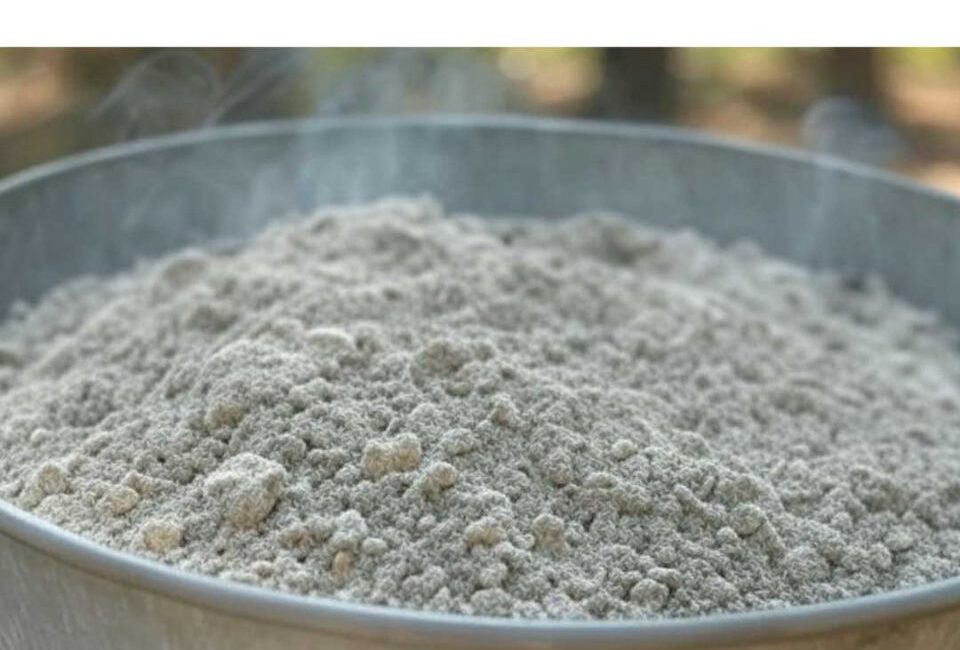Wood ash, often seen as a waste product of burning firewood, has long been overlooked in the gardening world. Yet, when used properly, it can become an invaluable resource for improving soil quality and promoting plant health. However, understanding how and when to use wood ash effectively is crucial for reaping its full benefits while avoiding potential pitfalls. This article delves into the composition of wood ash, its benefits, common mistakes to avoid, and how to use it in your garden to maximize its potential.
Understanding the Composition of Wood Ash
Wood ash is a byproduct of burning wood, and its composition can vary depending on the type of wood that is burned. Despite this variability, wood ash generally contains several key elements that make it beneficial for garden use:
- Calcium Carbonate: This is the primary component of wood ash, which makes it an excellent natural liming agent. Lime is often used in gardening to raise the pH of acidic soils. By raising soil pH, wood ash can help create a more favorable environment for plants that thrive in neutral to slightly alkaline soils.
- Potassium: Wood ash contains a significant amount of potassium, which is an essential nutrient for plant health. Potassium promotes root development, strengthens cell walls, and aids in the overall growth of plants.
- Phosphorus: This is another vital nutrient found in wood ash. Phosphorus plays a key role in energy transfer within plants and is essential for root development and flowering.
- Trace Nutrients: Wood ash also contains trace amounts of other elements such as magnesium, aluminum, iron, and manganese. These micronutrients contribute to the overall health of plants and can enhance soil structure.
It is essential to understand these components when considering wood ash as a soil amendment. By knowing what’s in the ash, gardeners can better determine which plants will benefit from its application and how it will impact the overall soil composition.
The Type of Wood Matters
The exact composition of wood ash can vary depending on the species of tree burned. Hardwoods like oak, maple, and hickory tend to produce more nutrient-rich ash than softwoods like pine or fir. Hardwood ashes have higher concentrations of calcium and potassium, making them more beneficial for soil amendment. Softwood ash, while still useful, tends to be higher in alkaline compounds and should be used with more caution.
Benefits of Using Wood Ash in the Garden
1. Raising Soil pH (Liming Agent)
One of the most significant benefits of wood ash is its ability to raise the pH of acidic soils. Many plants prefer a neutral or slightly alkaline soil, and wood ash can help achieve this by acting as a natural liming agent. By increasing the pH, wood ash reduces soil acidity, which can otherwise limit nutrient availability and affect plant growth.
For plants that require alkaline soil conditions, such as lilacs, lavender, and many vegetables, wood ash is a natural and effective soil amendment.
2. Providing Nutrients for Plant Growth
Wood ash is rich in several essential nutrients that are beneficial to plants. The potassium in wood ash helps improve overall plant health by promoting robust root growth and enhancing the plant’s ability to resist diseases. The phosphorus content aids in root development and flowering, making it particularly useful for flowering plants and vegetables that produce fruits.
These nutrients are available in a form that plants can absorb, which means wood ash provides an easy-to-apply solution to fertilize the garden.
3. Enhancing Soil Structure
Wood ash can also improve soil structure by loosening heavy clay soils and helping sandy soils retain more moisture. This makes it beneficial for both types of soil. In clay soils, wood ash helps break up compacted particles, allowing better air circulation and water movement. In sandy soils, it helps bind particles together, improving moisture retention and creating a more balanced soil texture.
4. Natural Pest Control
Another benefit of wood ash is its ability to deter pests naturally. When sprinkled around plants, wood ash can act as a barrier to slugs, snails, and other soft-bodied pests. The ash is abrasive and irritates the pests’ bodies, discouraging them from crossing the barrier. Additionally, wood ash can help keep certain insect pests, like ants and beetles, away from your plants.
For gardeners who want to avoid chemical pesticides, wood ash can be an excellent eco-friendly alternative.
5. Increasing Nutrient Availability
By raising the soil pH, wood ash helps to release other essential nutrients that may be tied up in the soil. In acidic soils, certain nutrients, such as phosphorus and calcium, may not be available to plants. When wood ash is applied, it increases the availability of these nutrients, improving overall soil fertility.
6. Acting as a Fungicide
Some studies suggest that wood ash has mild fungicidal properties. Its alkalinity may help suppress certain types of fungal growth, particularly on garden vegetables like tomatoes and potatoes. However, it should not be relied on as a primary fungicide, but it can provide an additional layer of protection when used in combination with other natural pest management practices.
Common Mistakes When Using Wood Ash
While wood ash offers many benefits, there are also several common mistakes that gardeners make when using it. Understanding these pitfalls is essential to using wood ash effectively.
1. Over-Application
One of the most common mistakes is applying too much wood ash to the garden. Since wood ash raises the pH of soil, excessive use can lead to overly alkaline soil. This can disrupt nutrient availability, harm plants that prefer acidic conditions, and create a hostile environment for certain microorganisms in the soil.
When in doubt, it’s better to apply less wood ash and monitor the effects, rather than over-applying and potentially creating long-term soil imbalances.
2. Not Testing Soil pH
Another mistake is applying wood ash without first testing the soil pH. Without knowing the current pH of your soil, it’s impossible to determine whether wood ash will help or harm your garden. If your soil is already alkaline, adding wood ash could exacerbate the issue, leading to nutrient deficiencies and poor plant health. It’s essential to test your soil pH before applying any amendments, including wood ash.
Soil testing kits are inexpensive and available at most garden centers, and they provide an accurate reading of the soil’s acidity or alkalinity.
3. Using Ash from Treated or Painted Wood
Wood ash from treated or painted wood should never be used in the garden. These materials can contain harmful chemicals, such as heavy metals and pesticides, which can leach into the soil and potentially contaminate your garden. Always ensure that the wood you burn is untreated and free from chemicals.
4. Ignoring the Needs of Acid-Loving Plants
Certain plants, such as blueberries, azaleas, and rhododendrons, thrive in acidic soils and may suffer if exposed to wood ash. Using wood ash around acid-loving plants can raise the soil pH and harm their growth. Always consider the pH preferences of specific plants before applying wood ash in their vicinity.
5. Not Storing Wood Ash Properly
Wood ash should be stored in a dry, covered container to maintain its effectiveness. Exposure to moisture can cause the ash to lose its nutrient content and its liming ability. Make sure to store wood ash in a cool, dry place and handle it carefully to avoid spills.
How to Properly Use Wood Ash in the Garden
To ensure that you are using wood ash effectively and safely in your garden, follow these guidelines:
1. Test Your Soil pH Before Application
Before applying wood ash, it is essential to test the pH of your soil. This will help you determine whether your soil is acidic and will benefit from the addition of wood ash. If your soil is already alkaline, it’s best to avoid adding wood ash, as this could worsen the issue.
2. Apply Wood Ash Sparingly
Less is more when it comes to wood ash. A light application is usually sufficient to raise the pH and provide nutrients to the soil. Typically, you can apply 10 to 15 pounds of wood ash per 1,000 square feet. Over-application can lead to an overly alkaline soil environment, which can harm plant growth.
3. Use Wood Ash for Pest Control
Wood ash can be sprinkled around the base of plants to deter pests like slugs, snails, and ants. Apply the ash in a thin layer, and reapply it after rain or watering, as moisture can reduce its effectiveness. This can be a useful and environmentally friendly alternative to chemical pesticides.
4. Incorporate Wood Ash into Compost
Adding wood ash to your compost pile can enhance its nutrient content. When mixed with other organic materials, wood ash helps balance the carbon-to-nitrogen ratio, speeding up the decomposition process and creating nutrient-rich compost. Just be sure not to add too much wood ash to the compost, as it can make the compost too alkaline.
5. Avoid Using Wood Ash on Acid-Loving Plants
If you have acid-loving plants in your garden, such as blueberries or azaleas, avoid using wood ash around them. These plants prefer acidic soils and may be harmed by the increase in pH caused by the wood ash. Instead, focus on applying wood ash to plants that thrive in neutral to alkaline soils.
6. Store Wood Ash Properly
To maintain the effectiveness of wood ash, store it in a dry, covered container. Moisture can cause the ash to lose its beneficial properties. Ensure the storage area is secure and safe to prevent accidental spills.
Conclusion: Maximizing the Benefits of Wood Ash
Wood ash is a valuable resource that can enhance the health of your garden when used properly. It offers several benefits, including raising soil pH, providing essential nutrients, improving soil structure, and deterring pests. However, it’s important to avoid common mistakes such as over-application, not testing soil pH, and using ash from treated wood.
By understanding the composition of wood ash, testing your soil, and applying it correctly, you can maximize its benefits while minimizing potential risks. With these guidelines in mind, wood ash can be a valuable tool in creating a healthy, thriving garden.




